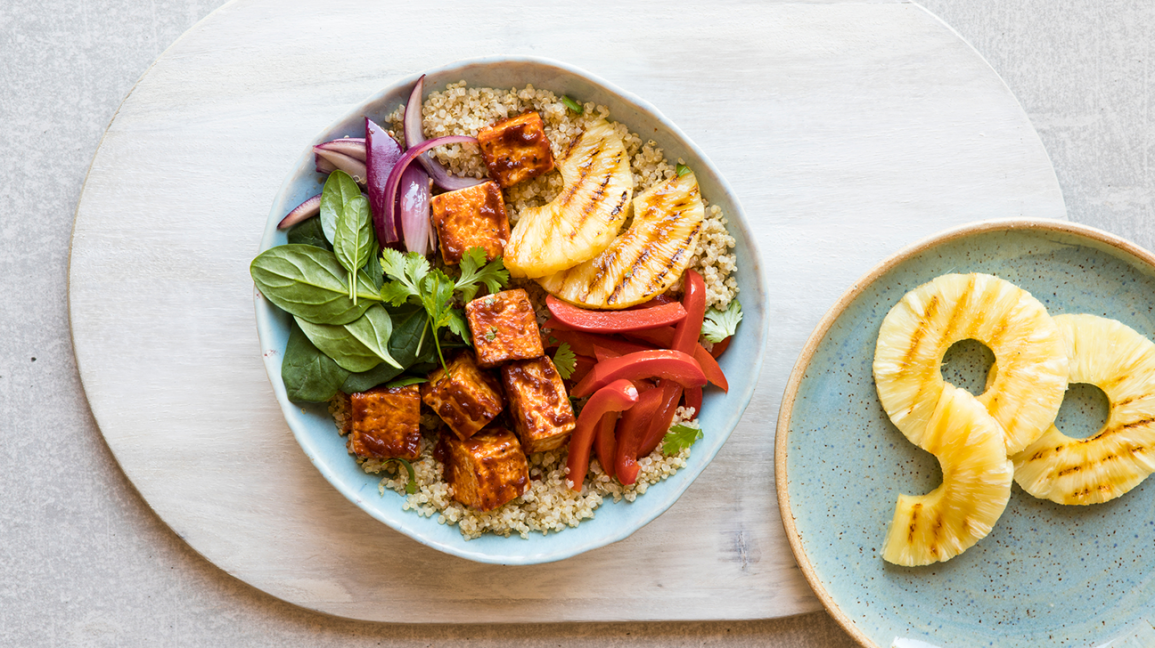Embracing a vegan lifestyle is not just about eliminating animal products from your diet, but about discovering a wide range of plant-based ingredients that are both delicious and nutritious. However, making sure your meals are well-balanced and full of flavor can sometimes feel like a challenge, especially when you’re new to vegan cooking. With the right ingredients and cooking techniques, you can enjoy vegan food every day without compromising on taste or nutrition.
Here’s how to create balanced, flavorful vegan meals that will keep you energized and satisfied:
1. Focus on Protein-Rich Foods
Protein is an essential nutrient, and luckily, there are plenty of vegan sources that can help you meet your daily needs. Some great options include:
- Legumes: Beans, lentils, chickpeas, and peas are all excellent sources of plant-based protein.
- Tofu and Tempeh: Both are made from soybeans and are versatile, taking on the flavor of whatever they’re cooked with.
- Nuts and Seeds: Almonds, sunflower seeds, chia seeds, and pumpkin seeds not only provide protein but also healthy fats.
Incorporating these protein-rich ingredients into your daily meals will help maintain muscle mass, support your immune system, and keep you feeling full longer.
2. Don’t Forget Healthy Fats
Healthy fats are crucial for hormone regulation, brain function, and overall well-being. Avocados, olive oil, nuts, and seeds are excellent sources of unsaturated fats. You can drizzle olive oil over your salads, add avocado slices to your sandwiches, or snack on a handful of almonds to ensure you’re getting the good fats your body needs.
3. Incorporate Whole Grains
Whole grains are a vital part of any balanced vegan diet. They provide fiber, B vitamins, and a steady source of energy throughout the day. Some popular vegan-friendly whole grains include:
- Quinoa
- Brown rice
- Barley
- Oats
These grains can be the base of your meals, used in salads, bowls, or soups, or even enjoyed as a breakfast porridge.
4. Load Up on Colorful Vegetables
Vegetables should be the star of your plate! They are full of vitamins, minerals, antioxidants, and fiber. Aim for a variety of colorful vegetables, as different colors typically represent different nutrients. Dark leafy greens like kale and spinach are particularly rich in iron, calcium, and folate. Root vegetables like sweet potatoes and carrots are packed with vitamins A and C. Cruciferous vegetables like broccoli and cauliflower are great for boosting your immune system.
Experiment with different vegetable preparations—roast, steam, sauté, or enjoy them raw to keep your meals exciting.
5. Use Herbs, Spices, and Sauces for Flavor
One of the challenges of transitioning to a vegan diet is ensuring that your meals are flavorful. The good news is that there are countless herbs, spices, and sauces that can elevate any dish. Here are some tips:
- Herbs and Spices: Basil, cilantro, parsley, thyme, turmeric, cumin, garlic, ginger, paprika, and curry powder can transform a simple dish into something special.
- Vegan Sauces: Nutritional yeast (for a cheesy flavor), tahini (rich and creamy), soy sauce or tamari (for umami), and homemade pesto (made with cashews or sunflower seeds) can add depth to your meals.
The right combination of spices and sauces can bring out the natural flavors of your ingredients and keep your meals exciting and satisfying.
6. Mind Your Micronutrients
While protein, fats, and carbs are the main macronutrients, don’t forget about the micronutrients like vitamins and minerals. A well-rounded vegan diet should include a variety of foods to ensure you get all the essential micronutrients, including:
- Vitamin B12: As it’s primarily found in animal products, consider fortified foods or a B12 supplement.
- Iron: Found in legumes, tofu, quinoa, and leafy greens. Consuming vitamin C-rich foods (like oranges or bell peppers) alongside iron-rich foods can help with absorption.
- Calcium: Leafy greens, fortified plant milks, and almonds are good sources of calcium.
7. Meal Prep for Convenience
One of the biggest hurdles to eating healthy every day is time. Meal prepping in advance can help you stay on track. Set aside some time each week to batch-cook grains, legumes, roasted vegetables, and sauces. This way, you can quickly assemble meals throughout the week without spending too much time in the kitchen.
8. Experiment with Vegan Comfort Foods
If you’re craving comfort food, there are plenty of plant-based options to satisfy those cravings. Try making vegan mac and cheese using cashews or nutritional yeast, or create a comforting bowl of vegan chili using kidney beans, tomatoes, and spices. These vegan comfort foods allow you to enjoy your favorite meals while staying true to your plant-based lifestyle.

No responses yet